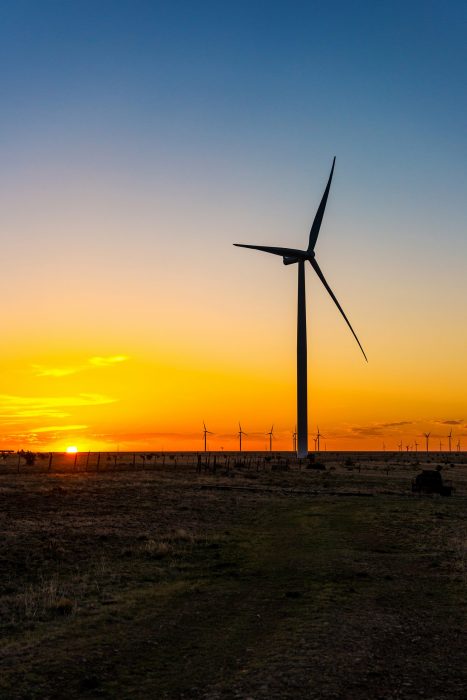Xcel Energy is the first major utility in the nation to announce a vision to provide its customers with 100% carbon-free electricity by 2050. We’ve also set a goal to reduce carbon emissions by 80% by 2030 across the eight states we serve. When it comes to curbing carbon emissions and addressing the risk of climate change, the electric power sector and energy companies have an opportunity to lead.
We understand that climate change and the transition to clean energy is top of mind for many of our policymakers and other stakeholders. Today, the customers and the communities we serve want clean energy, and in many instances, they are setting their own goals and commitments.

We understand this interest. That’s why for more than a decade, Xcel Energy has achieved increasingly ambitious carbon reduction goals and has led the industry on clean energy. We also know that we can do more—despite the significant progress that our company and the industry overall has made in delivering cleaner energy.
Just a Quick Note:
InnovationsOfTheWorld.com has partnered with Trade License Zone (TLZ) to support global innovators looking to expand internationally. Take advantage of the UAE’s Free Zones—enjoy streamlined setup, low corporate taxes, and a strategic gateway to the Middle East and beyond.
Get Your UAE Free Zone License Fast & Easy!To help shape the industry and prepare Xcel Energy for the future, we are investing in innovation across all areas of our business. Steel for Fuel is an example of this; we are capitalizing on high-quality wind resources in the states we serve while giving customers a clean product at a lower cost. Steel for Fuel compares the forecast for natural gas prices—the “fuel”—to the cost to build a wind farm—the “steel.”
The strategy is fairly straightforward but requires planning to execute on it. That’s where the innovation comes in—from contracting, to the speed to market to take advantage of federal tax credits, to efficiently integrating a tremendous amount of renewables on the grid while ensuring reliability—it all must come together.
Our CAPX 2020 project helps deliver the new wind energy to customers. We worked effectively with industry partners starting back in 2004 to construct nearly 800 miles of new transmission lines, a massive undertaking completed in 2017.
In 2018, we became the first utility in the nation to routinely fly unmanned aircraft beyond the operator’s line of sight. The Federal Aviation Administration (FAA) announced it authorized the flights, an unprecedented decision in the utility industry. This year, Xcel Energy is working with the FAA to fly unmanned aircraft over populated areas.

Our Renewable*Connect program—first launched in 2017—gives our customers more renewable energy choices beyond our basic service. For instance, the customer can choose a three-, five-, or ten-year contract to purchase carbon-free wind or solar energy. This year, the program became an option for our Wisconsin customers.
Customers in Wisconsin and Minnesota can also now claim the renewable energy we deliver to them through Certified Renewable Percentage. This allows customers to count the renewable energy portion of electricity delivered to them from our regular energy mix toward their energy goals.
Xcel Energy’s vision for the future includes new industry-leading goals announced in December 2018: By 2030, we aim to reduce carbon dioxide emissions 80% below 2005 levels company-wide. This means that by 2030, our annual carbon emissions from the electricity that serves our customers will be about 17 million tons, or 80% lower than in 2005.
We believe these emission reductions can be achieved cost effectively with continued fleet transition and operational changes and with the renewable, carbon-free generation and energy storage technologies available today.
By 2050, we aspire to provide our customers across all states with 100% carbon-free electricity. In the next 30 years, we will transition to serve our customers with electric resources that emit zero carbon dioxide emissions. To fulfill this aspiration, we will continue to increase renewable energy sources on our system, as well as technologies that enable renewable integration.
We will need new carbon-free dispatchable technologies—technologies not yet commercially available at the cost and scale needed to achieve our 2050 aspiration. Because of this, there needs to be significant research and development to ensure we have these technologies to deploy in the coming decades.
These are our most ambitious goals yet and achieving them requires working closely with our stakeholders. We need our partners to help develop advanced technologies that may not exist today and to work with us on comprehensive, long-term policies that provide a more certain path.













